3 000
maintenance technicians trained using Memory Anchoring®
70 %
declare they now prefer Woonoz to other training solutions
5 000
employees in total work for Otis France
“With Memory Anchoring® there is no time wasted on notions that are already mastered. The emphasis is placed on the points that pose a problem.”

Yves Pelliard
Technical Training Director
Company: Otis
Industry: Specialists in elevators
Number of employees: 5,000 employees in France
Client’s requirements: Rapidly train 3,000 technical maintenance staff to a new trade
Content of the training programme: Electrical specifications, risk prevention
Type of training: Anchoring of knowledge and behavioural reflexes
What training plan did you implement?
Otis is a subsidiary of United Technologies Corporation – the world leader that manufactures, installs and services elevators, escalators, moving walkways and related equipment. The group has recently diversified its activities by integrating a new branch, Portis. In addition to our elevator services, we now also propose services associated with automated closing systems: pedestrian gates, industrial gates, garage doors, etc. So we needed to train our 3,000 technical staff in record time to the specifics of maintenance in this new field, raising their awareness to electrical risks in general and to the risks inherent to this type of equipment in particular. Up until now, we conducted our training programmes internally, with one day of theoretical training delivered in the classroom and one half-day dedicated to practical application. However, this organisation required a significant investment in terms of time without yielding convincing results.
The group has recently diversified its activities by integrating a new branch. This means that we needed to train a vast number of staff in record time to the specifics of maintenance in this new field
What training plan did you implement?
We kept the half-day dedicated to practical application but decided to replace the theoretical classroom training with a Memory Anchoring® module. From a technical standpoint we had to introduce a few changes as our technicians were not equipped for e-learning. We provided them with touchscreen tablets made available at our branches. However, this does not seem to be the best solution and we’ll soon provide them with smartphones. This will be much more convenient for them and more importantly it will also optimise efficiency for Memory Anchoring® as this method recommends practicing often over short periods of time rather than concentrating on a single session for a longer period. To support the roll out of the new training programme we also launched an internal communication campaign on Memory Anchoring® explaining how this innovative technology works, as we were aware that this format, which is not typical, could disconcert some of the participants.
To support the roll out of the new training programme we launched an internal communication campaign on Memory Anchoring® explaining how this innovative technology works.
Why did you turn to Woonoz?
In my opinion, on top of its efficiency in terms of memorisation of course, the main advantage of Woonoz’ solution lies in the time it enables the company to save. In fact, Memory Anchoring® technology gets straight to the point. Unlike other classic training solutions, Woonoz adapts to each individual, to their profile, pace and level in order to propose a personalised training path. No time is wasted on notions that are already mastered and the emphasis is placed on the points that pose a problem. This is something that our teams really related to. In terms of organisation, personally I appreciate the methodology adopted by Woonoz that consists in defining a series of key points that the participants are required to master after completing the training module. This might seem obvious on hindsight, but addressing the issue in this way really changes everything. Moreover, the teams at Woonoz are very flexible and responsive.
With Memory Anchoring® no time is wasted on notions that are already mastered and the emphasis is placed on the points that pose a problem.
This is something that our teams can really relate to.
What about the results?
In order to measure the adoption rate of this new training method we conducted a survey with our teams. 70 % said they preferred Woonoz Memory Anchoring® to other training solutions. The remaining 30 % seemed to have no particular preference. What I noted however is that no one was against it! This shows us that the training programme attracted a lot of interest from Otis employees. Some of them even asked us to apply Memory Anchoring® to other subjects! We were also conducting our own experiment in parallel: we trained a cohort of 40 technicians, 20 without using Woonoz and 20 using Woonoz. After 3 months training we asked them to take a test. The scores obtained by the participant using Woonoz were much higher. We thus confirmed the efficiency of Memory Anchoring®.
After 3 months training we asked them to take a memorisation test. The scores obtained by the participant using Woonoz were much higher. We thus confirmed the efficiency of Memory Anchoring®.
What are your projects for the future?
Feedback from our technical staff has been very positive. We also had great feedback from the Management Team: some of them have actually tested the modules themselves and have told me that they were really impressed with the efficiency of the method as well as it ease of use. Another significant advantage with Woonoz is the fact that we have access to tools that help us measure precisely the participants’ progress. This is impossible with a classical training programme that cannot tell us how a message is understood and memorised. We now have all the proof we needed and completely trust Woonoz and their Memory Anchoring® engine. We will continue to train our teams using the technology at a pace of 4 or 5 modules per year on different contents. This will concern both the anchoring of knowledge and reflexes. The objective is to train our technical staff on a regular basis to ensure they are always at the highest level of technical skills and knowledge.
Some of the management team have actually tested the modules themselves and have told me that they were really impressed with the efficiency of the method as well as it ease of use.
Other information that may be of interest to you